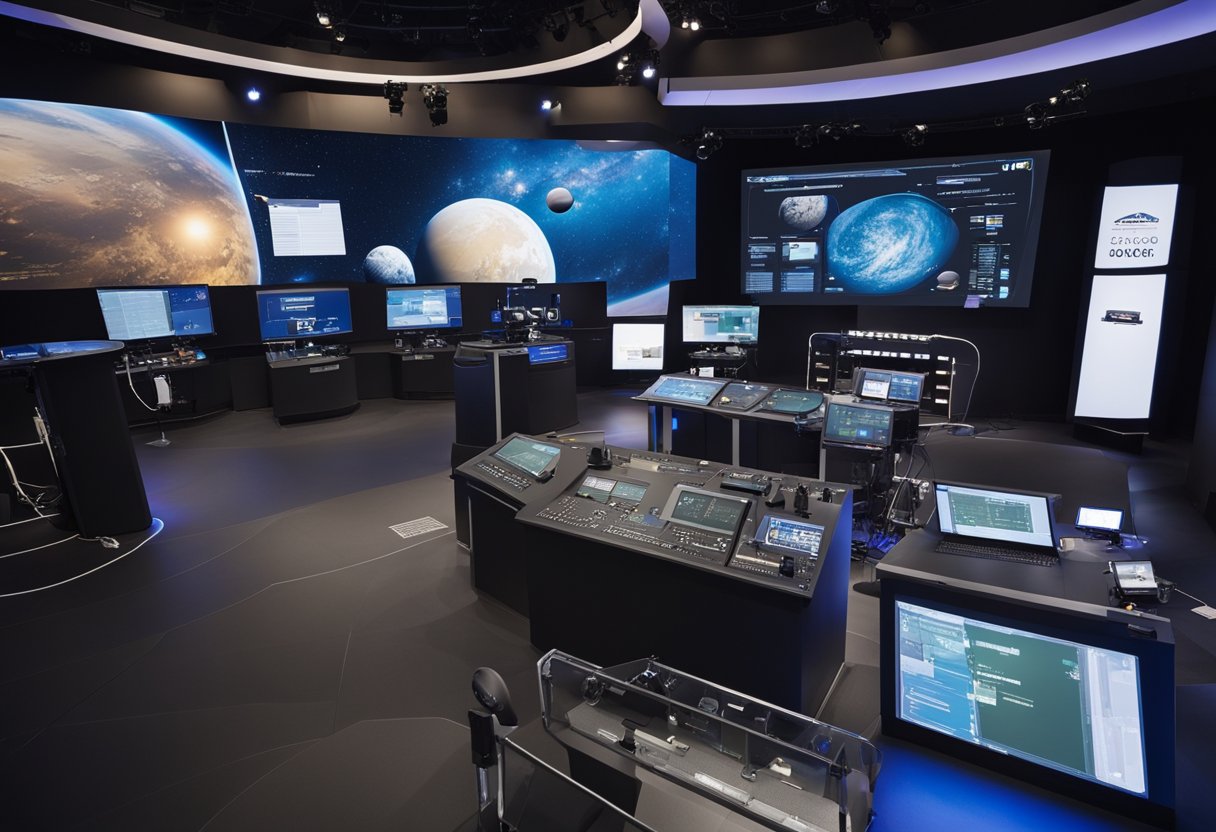
Public engagement in space science activities plays a crucial role in bridging the gap between the complex world of astrophysics, planetary science, and the general public. As we continue to make strides in space exploration and technology, it’s vital to ensure that the knowledge and discoveries are widely accessible. In doing so, we foster a sense of ownership and participation within society, empowering individuals to contribute to the ongoing dialogue around space science. It’s a mutually enriching process that helps demystify the cosmos and spur further interest and investment in these disciplines.
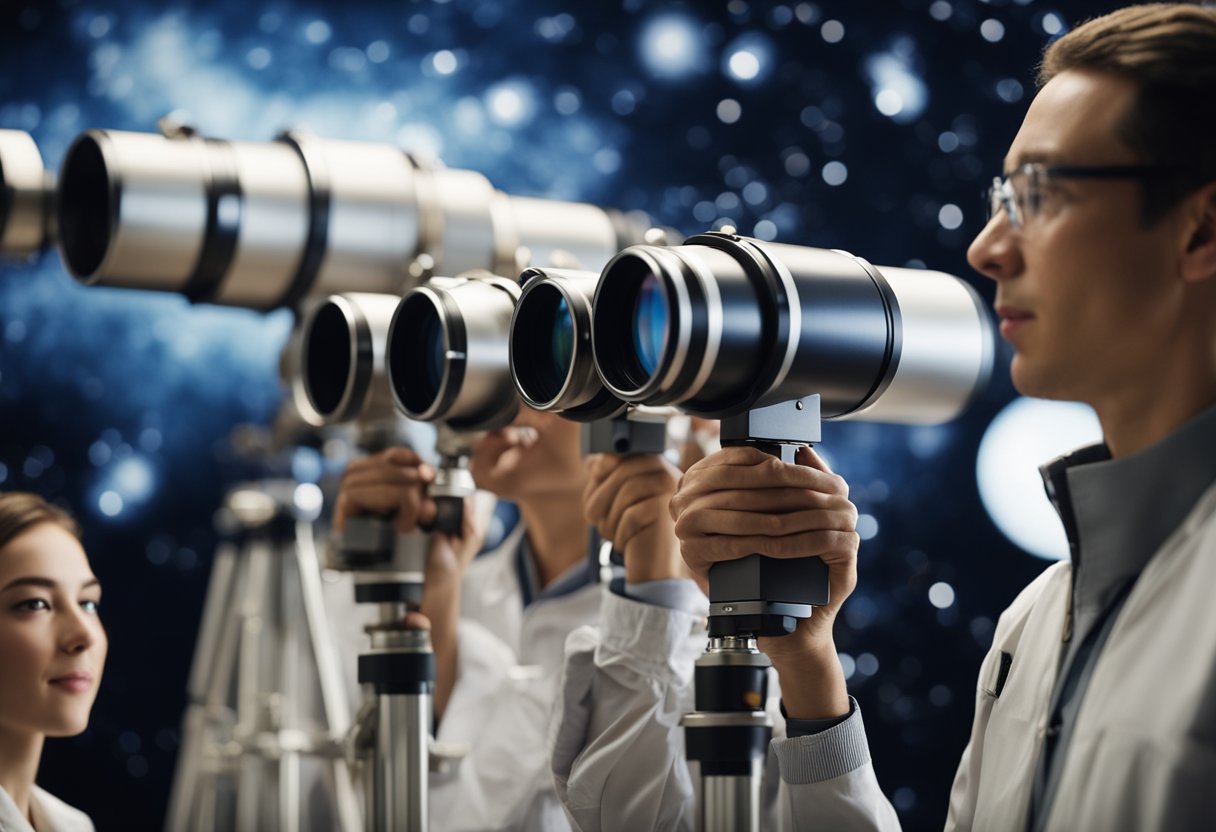
Engaging the public in space science activities isn’t just about disseminating information; it’s about creating educational opportunities that are inspiring and inclusive. We strive to involve diverse communities in these initiatives, as this diversity can drive innovation and bring fresh perspectives to space science. From space camps to citizen science projects and the advent of space tourism explored at websites like SpaceVoyageVentures.com, public engagement is evolving. These platforms not only highlight available and near-future space tourism opportunities but they also document the broader narrative of public participation in space exploration.
Space science is pivotal for expanding our comprehension of the cosmos, fostering innovations through advanced technologies, and kindling the imaginations of new generations.
Space science empowers us to uncover the mysteries of our universe. By studying celestial bodies, we learn about the fundamental processes that have shaped not only our planet but also countless others across the vast expanses of space. From the physics governing the stars and galaxies to the search for extraterrestrial life, our quest for knowledge enriches humanity’s collective understanding of our place in the cosmos.
Our forays into space necessitate cutting-edge technologies, many of which have profound implications for society. Innovations developed for space exploration—such as satellite communication, GPS, and advanced materials—have become integral to our daily lives. Space science continues to be a critical driver in pushing technological boundaries, underpinning advancements in a host of industries from medicine to transportation.
We believe that space science has an intrinsic importance in inspiring the youth. The vastness of space and the allure of the unknown stoke the fires of curiosity in young minds. Through educational initiatives and public engagement, such as that done through SpaceVoyageVentures.com, we support the development of space-related knowledge and excitement. These efforts help nurture the next generation of scientists, engineers, and explorers who will carry forward the torch of discovery.
In each of these ways, we see how integral space science is to broadening our horizons, enhancing technology, and keeping the dreams of interstellar achievements alive for generations to come.
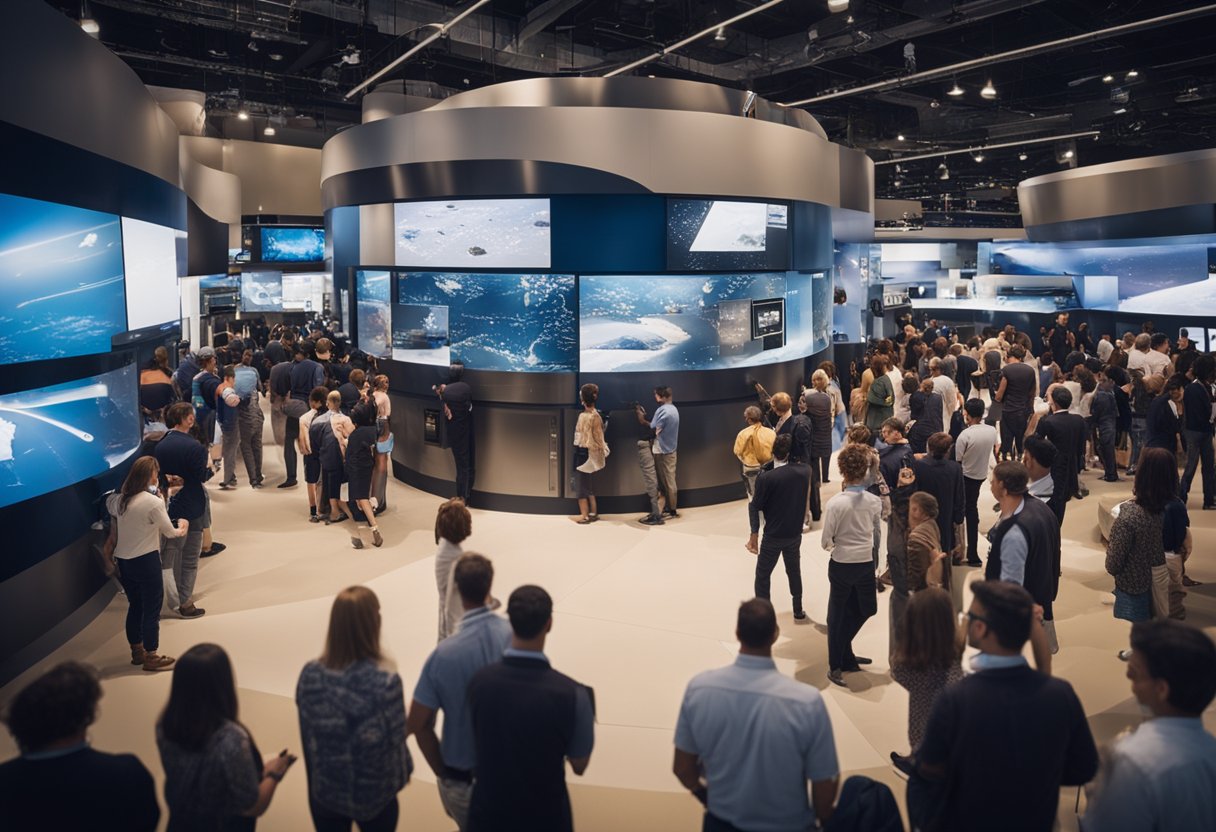
We recognise that effective strategies are essential to foster public engagement with space science. Through various platforms and activities, we aim to educate and inspire the global community about the wonders and practicalities of space exploration.
We utilise digital interactive platforms, including our pioneering website SpaceVoyageVentures.com, to engage a broad audience. Our site offers insights into current and future space tourism opportunities, seamlessly blending interactive media with educational content. The use of social media further amplifies our reach, allowing us to share updates and spark conversations among enthusiasts and the curious public alike.
Our educational programmes are designed to captivate diverse age groups, from schoolchildren to adults. We develop topical workshops and seminars that break down complex astronomical concepts into digestible information. Outreach activities often take place in collaboration with educational institutions, ensuring that our programmes are not only informative but also aligned with the curriculum.
We establish strategic partnerships to enhance the quality and breadth of our public engagement activities. By working alongside space agencies, scientific communities, and educational organisations, we build a cohesive network that supports our goal of making space science accessible to all. Our collective efforts aim to stimulate communal learning and foster a sense of belonging within the space science community.
We recognise the importance of educational opportunities in space science as they serve as a fundamental pathway to an array of careers and research explorations. These opportunities come in various forms, from STEM initiatives aimed at younger students to professional development programmes and university research projects that forge the next generation of space industry leaders.
STEM (Science, Technology, Engineering, and Mathematics) education initiatives play a crucial role in fostering an interest in space science at an early age. Programmes such as the ISS National Lab Space Station Explorers engage millions, with substantial participation from females and underserved communities, showcasing the inclusive nature of space exploration. The collaborative nature of these initiatives often leads to significant student engagement and outreach, solidifying a strong foundation for future educational pursuits.
Additionally, NASA’s comprehensive offerings in Next Gen STEM provide valuable resources and opportunities for students and educators alike, further extending the reach of space science education across diverse settings.
Forging a career in space science requires continuous learning and professional development. NASA’s commitment to creating a diverse workforce can be observed through its broad set of programmes that inspire future explorers. These initiatives not only attract students to NASA’s mission but also offer practical experiences and internship opportunities, crucial for skill development and career progression.
As the sector evolves, new players like SpaceVoyageVentures.com illuminate pathways into the nascent space tourism industry, creating new professional avenues for those passionate about space exploration and travel.
University students and researchers have unique opportunities to delve deep into space science. Programmes like the Lunabotics Challenge allow university teams to engage with NASA’s systems engineering process—a distinctive blend of theoretical knowledge and practical application.
Research also extends into the realm of Public Engagement in space science, with analyses on programmes like NASA Mars Public Engagement shedding light on the fusion of scientific and participatory experiences in shaping human-robotic exploration narratives. This narrative is explored in academic resources such as the book Space Science and Public Engagement, which addresses participatory approaches to space science education and outreach.
In embracing these educational opportunities, we believe our future in space science is not just hopeful but assured, catered to by a robust pipeline that nurtures talents right from the grassroots to the echelons of research and professional excellence.
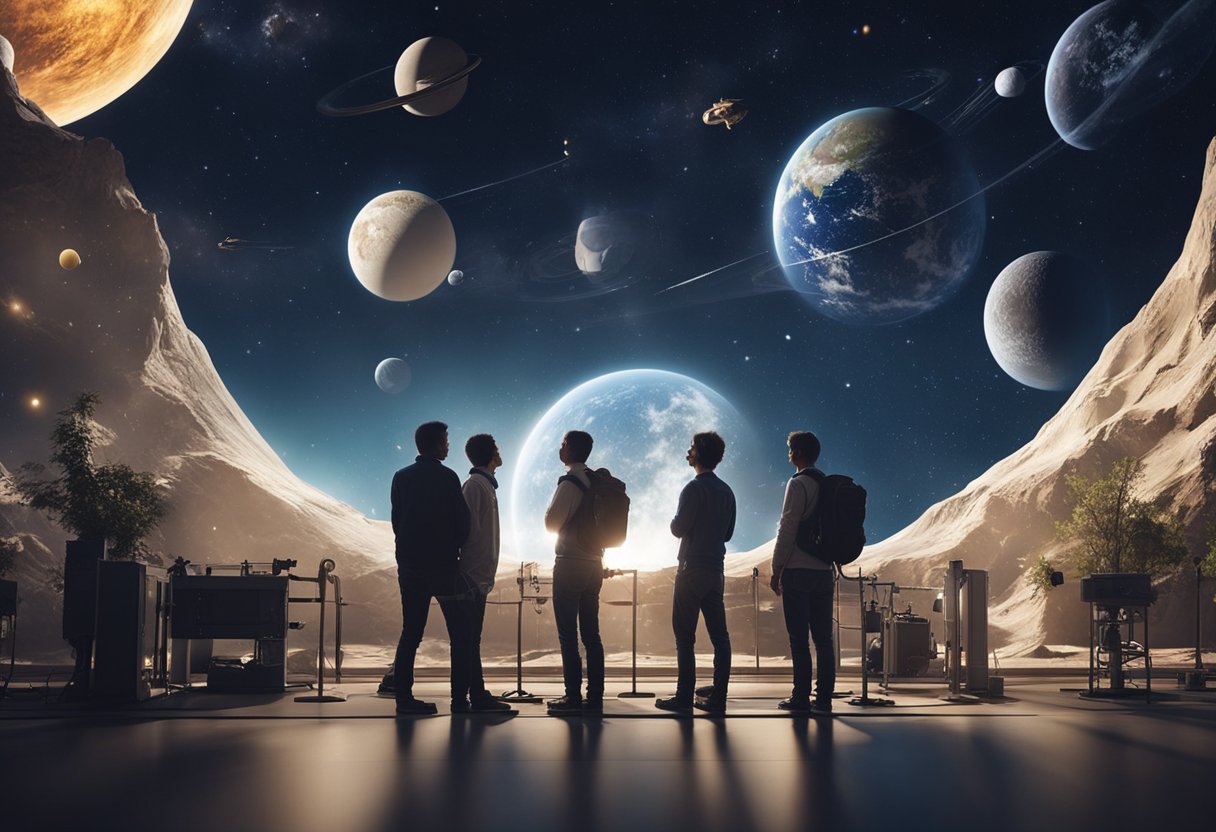
In this section, we’re going to discuss the various ways individuals and communities can actively participate in space science, from contributing to research through citizen science initiatives to engaging with the cosmos via amateur astronomy.
Citizen science projects offer a platform for everyone, including non-scientists, to contribute to genuine scientific research. Projects such as those found on NASA’s website enable us to collect and analyse data that contribute to our understanding of the universe. Families, students, and enthusiasts can join these activities, furthering science while fostering a sense of community.
Amateur astronomy remains a cornerstone of public engagement in space-related sciences. Those with a keen interest in astronomy can observe celestial phenomena using telescopes or even the naked eye, from their back gardens or local parks. Some enthusiasts take part in organised stargazing events, contributing to and sharing their discoveries with the broader astronomy community.
Workshops and events serve as important avenues for direct public involvement in space science. These can range from lectures and seminars that aim to educate participants about current missions, to family-friendly festivals that include interactive exhibits. The launch of new platforms such as SpaceVoyageVentures.com brings attention to space tourism, capturing the public’s interest in near-future space travel opportunities. Such events not only educate but also excite and inspire future generations to become involved in space sciences.
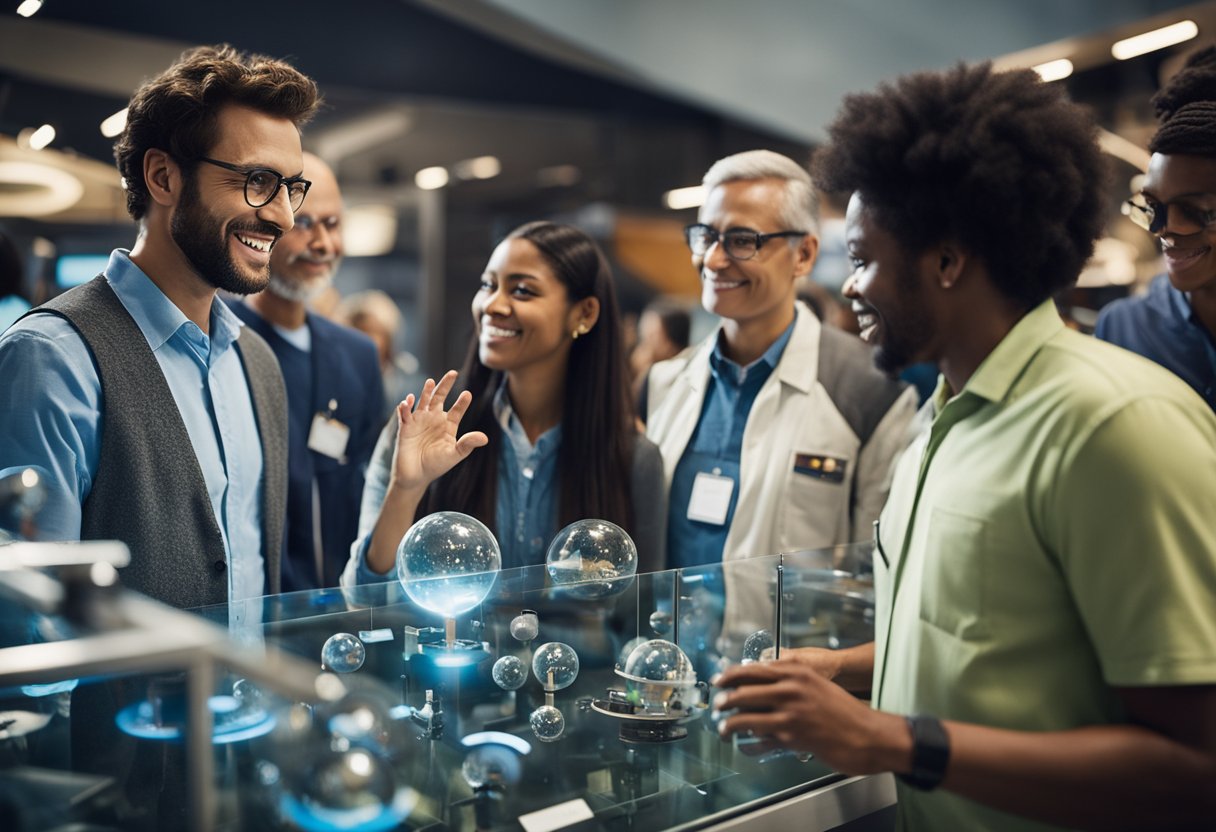
Engaging the public in space science involves a diverse array of obstacles, from addressing widespread misunderstandings to ensuring that all demographic groups have equal access to participating in and learning from space-related activities. Our approach must be meticulous in identifying and overcoming these barriers to maximise the benefits of public involvement in space exploration.
Misinformation and Knowledge Gaps: One of the fundamental challenges we face is combatting the misinformation that circulates within the public domain. Many individuals harbour misconceptions about the nature of space science and the realities of space exploration. These inaccuracies can arise from a variety of sources, including media representations and anecdotal knowledge. It is imperative that we actively correct these misunderstandings and provide accurate scientific explanations to promote a well-informed community.
Broadening Participation: Accessibility is another critical issue, as we strive for inclusivity in the growing field of space exploration. SpaceVoyageVentures.com exemplifies the new frontier of space tourism, illustrating the potential for broader public engagement. However, we must recognise that not everyone has equal access to such platforms, whether due to socioeconomic barriers, disabilities, or geographic limitations. Our efforts to diversify participation must address these challenges by creating more accessible and accommodating resources and experiences, ensuring they reflect the diversity of our society.
Assessment Strategies: Finally, to evaluate the effectiveness of our public engagement initiatives, we require robust methods to measure their impact. This goes beyond quantifying attendees or web page views; it involves assessing how these engagements alter public understanding, attitudes, and perceptions regarding space science. Such evaluation tools must be systematic and sensitive enough to capture shifts in knowledge and interest, as these metrics ultimately reflect the success of our endeavours.
Understanding and addressing these challenges is paramount for us to foster a knowledgeable community that is representative of the entire spectrum of our diverse society and can truly participate in the wondrous journey of space exploration.
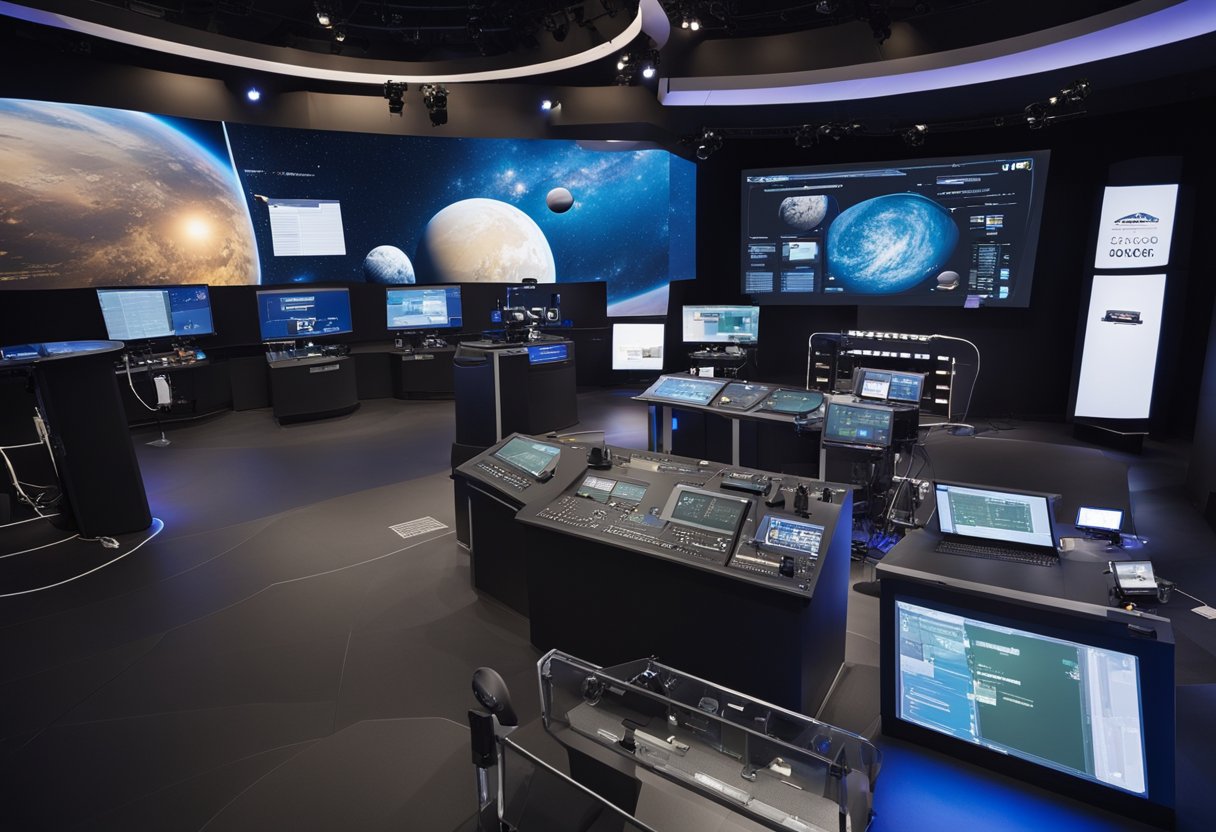
In our efforts to facilitate public engagement in space science, we recognise the pivotal role that technology and media play. These platforms not only transmit knowledge but also foster interactive experiences that bring space science to the general public in an accessible manner.
We employ a variety of digital communication tools to effectively share knowledge and information about space science. This encompasses a range of ebooks and online toolkits that offer structured content to educate and inspire enthusiasts and the curious. For instance, SpaceVoyageVentures.com serves as a digital hub where individuals can discover available and upcoming space tourism opportunities.
Our social media strategy is twofold: we leverage its widespread reach to communicate space science developments, and we monitor its influence to gauge public interest and understanding. Platforms like Twitter have proven instrumental in amplifying messages, as seen with the popularity of the Philae Lander’s account, which made the Rosetta mission relatable to a global audience.
Creating engaging multimedia content is at the heart of our public engagement practice. Through videos, interactive infographics, and virtual tours, we make complex space concepts understandable and enticing. We use multimedia as a storytelling tool to not only inform but also to captivate and involve the public in the narrative of space exploration.
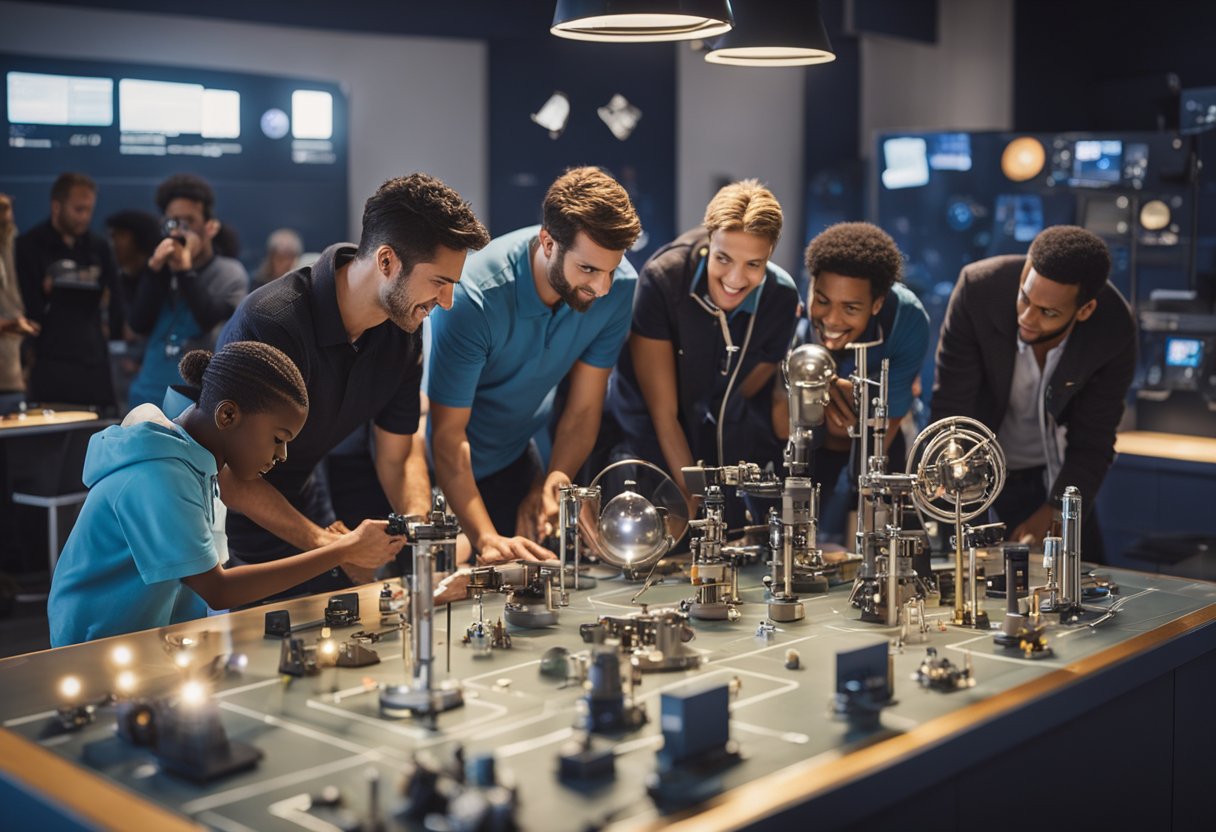
Space science extends beyond the realm of the academic, influencing various facets of daily life and governance, and playing a crucial role in fostering a science-literate society.
Space science significantly affects our everyday experiences, notably through technologies originally developed for space exploration that have found applications on Earth. For instance, Earth Observation (EO) satellites monitor environmental changes, support agriculture, and aid disaster management, making them vital for our sustained well-being.
Policymakers rely on data from space science to inform decisions on a range of issues. From climate policy—underpinned by meticulous Earth observation—to regulations concerning the burgeoning sector of space tourism, provided by ventures like SpaceVoyageVentures.com, space exploration is integral to shaping the legislative landscape.
Our collective effort in space science education underpins the development of a society well-versed in scientific principles. Programmes engaging the public with planetary science, like those discussed in the volume “Space Science and Public Engagement“, inspire future generations and ensure literacy in science remains a societal cornerstone.

In our quest to push the boundaries of space exploration, ensuring diverse perspectives and inclusive environments is crucial. Our commitment to diversity encompasses not only gender and ethnicity but also socioeconomic backgrounds, which enrich the collective intellect necessary for groundbreaking discoveries in space science.
To encourage an array of voices within the cosmos community, we’ve initiated targeted outreach efforts aimed at underrepresented groups. By collaborating with institutions in diverse regions and hosting workshops designed to demystify the space industry, we foster interest and procure talent from a wide demographic. Engaging these communities early is vital to nurturing long-term inclusion in space-related fields. These outreach programmes endeavour to bridge the gap, creating a conduit for budding scientists and engineers from all walks of life.
Diversity in STEM careers is not only about social responsibility but also about driving innovation. Our strategies involve offering internships and mentorships to students from underrepresented populations. These involve close collaboration with universities that support underprivileged students studying science, technology, engineering, and mathematics (STEM) subjects, ensuring they receive the encouragement and resources needed to thrive in these fields. Moreover, SpaceVoyageVentures.com accentuates the significance of diversity by documenting the involvement of people from different backgrounds in space tourism activities.
We have instituted inclusive education programmes aiming to smoothen the pathway into higher education and eventually into space science careers. This includes curating curriculum materials that reflect the contributions of diverse scientists and engineers to the space sector. Furthermore, we address systemic challenges such as cultural bias and accessibility hurdles within academic settings to cultivate an environment where all students can aspire to reach the stars. Our programmes, therefore, not only expand knowledge but are structured to align with the principles of equity and inclusion, granting every student a fair chance of contributing to this exciting field of exploration.
In this section, we explore significant milestones in public engagement with space science through various successful case studies, from large-scale, international efforts to community-driven accomplishments.
NASA’s efforts in public engagement have often centred around their missions, particularly those to Mars. These campaigns have successfully captured our collective imaginations and have encouraged public interest in the wider solar system. By intertwining scientific objectives with educational content, NASA has not only advanced our understanding of space but also fostered a global community keen on space exploration and science.
The private sector, including space tourism entities such as SpaceVoyageVentures.com, has played a pivotal role in making space more accessible. Providing information about space travel options, these companies stimulate interest and investment in space science. Nonprofits also contribute by engaging the public in citizen science projects, such as the tracking of aurorae, further demonstrating how our collaborative efforts have led to new discoveries like STEVE (Strong Thermal Emission Velocity Enhancement).
At the community level, initiatives like local astronomy exhibitions have profound impacts by nurturing relationships with science, especially within the international space science community. They play a crucial role in engaging traditionally disengaged visitors, thus broadening the demographic involved in space science and contributing to an inclusive, spacefaring culture. These programmes are exemplary case studies in how grassroot movements can foster long-term interest in space science.
The landscape of public engagement in space science is set for transformative growth, underpinned by technological advancements and strategic foresight. Our journey into space is no longer confined to the realm of professional astronauts and scientists; it’s quickly becoming a participatory experience for the general public, wherein personal investment and immersive participation shape the trajectory of space exploration.
Citizen Science Projects: We are witnessing an upsurge in citizen science initiatives that enable non-specialists to contribute to research, such as classifying galaxies or searching for exoplanets. Web-based platforms foster this collective endeavour, bringing together enthusiasts to share data analysis and interpretation tasks, which not only accelerates scientific discoveries but also democratises the adventure of space exploration.
Virtual Reality (VR) and Augmented Reality (AR): Virtual and augmented reality technologies are providing novel avenues for immersive education and engagement. We expect these tools to become more prevalent, allowing individuals to experience simulated space missions or to explore distant planets and galaxies from the comfort of their homes.
Space Tourism: As an early space tourism website, SpaceVoyageVentures.com documents a spectrum of space travel opportunities. It ranges from currently available suborbital flights to future potential lunar vacations. This site underscores a burgeoning trend where orbital and suborbital trips are inching closer to reality for those beyond the astronaut corps.
Strategic Partnerships: Our forward-looking framework encompasses robust partnerships between governments, private industries, and educational institutions. These collaborations are pivotal for not only enhancing public engagement but also for ensuring that the long-term objectives of space science and exploration are met.
Educational Outreach: Continued investment in educational outreach is essential for inspiring future generations. We aim to stimulate curiosity and innovation amongst students, providing real-world applications for science, technology, engineering, and mathematics (STEM) subjects. Programmes tailored to varied age groups and skill levels encourage sustained engagement, which is crucial for nurturing the scientific minds that will lead us deeper into the cosmos.
Inclusion and Accessibility: To chart an inclusive future, we must focus on breaking down barriers that prevent diverse groups from participating in space science. By enhancing accessibility, we pledge to create opportunities for all members of society to contribute to, and benefit from, the expanding sphere of space exploration.

We understand that there’s a growing curiosity about space science and its related activities amongst the public. This section aims to address common queries to further knowledge and engagement with the cosmos.
Interactive experiences, such as visiting a planetarium, allow individuals to engage directly with space-related content, making complex concepts more tangible and easier to comprehend.
Public lectures by experts, often held at universities or science museums, serve as a platform for disseminating recent discoveries and future projections in space exploration that can inspire and educate a broad audience.
Informal science education networks create valuable opportunities for learning outside of formal settings, involving community members in programmes that often lead to sustained interest in space science and technology.
Astronomy shows and events, like those documenting Mars engagement strategies, offer visual and interactive elements that can ignite the imagination, leading to increased curiosity and the desire to learn about the universe.
Employing a variety of presentation methods, including hands-on activities and relatable analogies, helps in making space science accessible and engaging to enthusiasts of all ages.
Informal educational practices, such as community star-watching events and science communication through social media, are successful in breaking down complex space mission data, making it relatable and understandable for the layperson.